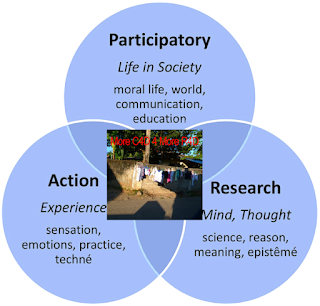Is this good news coming from the Agricultural Training Institute (ATI)? “Smartphones, Social Media Become Vital Tools For Farmers Under This Digital Farming Course[1]” (Betheena Unite, 30 July 2021, MB.com.ph):
Farmers Go Digital – A
farmer-youth tandem completes the hands-on activity on smartphone
familiarization under the Digital Farmers Program (DFP) training conducted by
Agricultural Training Institute Region 2.
(above image from ATI Region 2)
What the ATI is trying is “to build a pool of
digitally-adept farmers and agriculturally-involved youth nationwide.” Farmers
better at working their smartphones.
The next stage of the ATI training is the DFP to be
conducted this August:
The DFP 102 this
August will center on in-depth agriculture applications and the utilization of
social media and smartphones to improve both farming efficiency and
productivity.
After this course,
participants should be able to identify and use agri-related applications from
both government and private organizations, as well as social media platforms
that will enhance their practices.
I
can see that all that is for farmers to be good at social media – but not to be
good farmers! For the simple reason that social media does not yet present a
single Digital Library of Smart Farming.
“Data literacy leads to business results” says the above
image quote I found on Facebook (Udemy
Business); if that is correct, then it is correct to say, thinking about
agriculture, “Science literacy leads to better farming results.”
So
we need first to build a science-&-knowledge-filled library of agriculture
to help people learn to become better farmers.
Not a single one of the websites of ATI, DA, IRRI, and
PhilRice gives you options if you
asked for them. For instance, you wanted to plant hybrid rice. Using your
smartphone, you type “hybrid rice” (including the double quotes for precision),
and none of those websites will show you a list of all hybrid rices available
in the Philippines.
I visit the IRRI website (irri.org) and type “hybrid rice,” and
it shows me a page with 387 words explaining what “hybrid rice” means, etcetera – nothing else. Still on the
website, when I search further for “hybrid rice varieties,” I am shown a
countless number of text & image entries but no list of the varieties! Same
with the PhilRice website (philrice.gov.ph) and ATI website (ati.da.gov.ph). No
list.
All those are old-style websites that keep on adding news
& info to the current content but hardly discuss new or improved technology
or system in agriculture!
Here are 2 entries in that IRRI webpage:
«
Facilitating
the development of close partnerships between the public and private sectors to
promote hybrid rice research and development
«
Carrying
out multi-location varietal trials to select the best hybrid rice for different
environments.
So,
IRRI is still promoting public-private hybrid rice R&D. When will it end?
Instead, IRRI should be promoting the “promising results” of
its R&D. That would be a good part of the Digital Library of Smart Farming!
We
need a smart library first, and then we can come up with SmartFarmers using
their smartphones.@517
[1]https://mb.com.ph/2021/07/30/smartphones-social-media-become-vital-tools-for-farmers-under-this-digital-farming-course/?fbclid=IwAR0IUeVjWXLYpuvhdVBLPkdM8zpZldLn2W1CvV0nKHgRMwPuNkFv3wdrmqw














